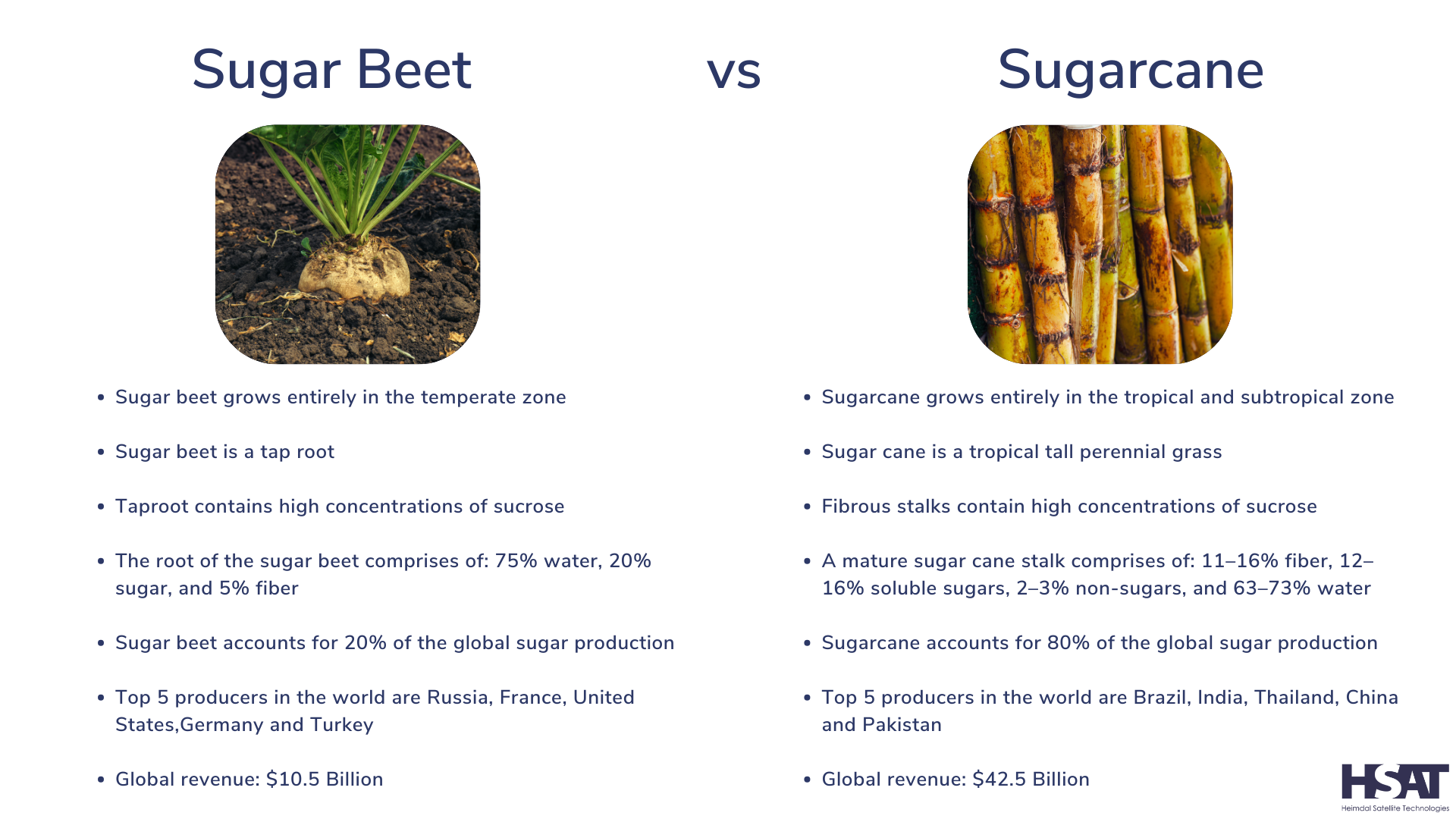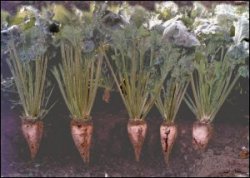Beet Sugar vs Cane: How They Affect Your Body and Overall Wellness
Beet Sugar vs Cane: How They Affect Your Body and Overall Wellness
Blog Article
Beet Sugar Vs Walking Stick: Discover the Best Choice for Your Sweetening Requirements
The choice between beetroot sugar and walking stick sugar prolongs beyond mere sweetness; it incorporates factors such as flavor profiles, manufacturing methods, and dietary benefits. The earthy undertones of beetroot sugar may not match every meal, whereas walking stick sugar is typically preferred for its clean taste.
Summary of Beetroot Sugar
Beet sugar, typically originated from the sugar beetroot plant, is regularly made use of as an essential sweetening representative in numerous foodstuff. The sugar beetroot, a biennial plant, grows in warm environments and is mainly grown in regions such as Europe and North America. beet sugar vs cane. The removal procedure involves cutting the beetroots and extracting the juice, which is after that purified and crystallized to produce granulated sugar
One significant characteristic of beetroot sugar is its chemical make-up, which is almost similar to that of cane sugar, as both are composed predominantly of sucrose. This resemblance enables beet sugar to be utilized mutually with cane sugar in recipes and food manufacturing.
Beetroot sugar is additionally kept in mind for its flexibility in various applications, consisting of baking, beverage solution, and confectionery manufacturing. In addition, the beet sugar industry has made strides in lasting techniques, with several manufacturers applying eco friendly farming methods.

Introduction of Cane Sugar
Walking cane sugar, originated from the sugarcane plant, is just one of the most commonly acknowledged and utilized sugar globally. It is primarily composed of sucrose, a disaccharide that provides a wonderful flavor profile important for different culinary applications. Walking stick sugar is generally discovered in granulated kind but is additionally available as raw sugar, brown sugar, and powdered sugar, each offering distinctive purposes in cooking and baking.
The cultivation of sugarcane projects in exotic and subtropical areas, adding to its widespread accessibility. The plant grows in warm climates, calling for ample sunshine and water for optimum growth. Walking stick sugar is often valued for its all-natural production method and marginal processing, which protects its flavor and nutritional residential or commercial properties.
Along with its cooking usages, walking cane sugar plays a considerable function in the food sector, functioning as a preservative, fermentation substratum, and texturizing agent. Its adaptability extends past food, finding applications in beverages, confections, and also cosmetics. With a long background and a strong social visibility, walking cane sugar remains to be a recommended option for consumers seeking a natural sweetening option.
Manufacturing Procedures Contrasted
When comparing the production processes of beetroot sugar and walking stick sugar, it ends up being clear that each approach shows the distinct features of its resource material. Beet sugar production begins with gathering sugar beets, which are after that cleaned, cut, and based on warm water extraction to liquify the sugar. The resulting juice undertakes purification via liming and carbonation, followed by evaporation to focus the juice. Ultimately, formation happens, generating raw sugar, which is after that fine-tuned to create the final item.
In comparison, walking stick sugar manufacturing entails harvesting sugarcane stalks, which are squashed to extract juice. The walking stick sugar procedure incorporates a much longer milling and pushing phase, which aids in extracting optimum juice from the stalks.
Both processes highlight performance, however navigate to this site the approaches highlight differences in equipment and energy usage. Beet sugar has a tendency to have an extra straightforward processing course, while cane sugar production can be extra intricate as a result of the fibrous nature of the walking cane stalks. Inevitably, these differences form the features of the sugars created.
Nutritional Profiles and Advantages
Sugar, a staple in numerous diets, varies in nutritional accounts and advantages depending on its source. Both beet sugar and walking stick sugar primarily include sucrose, supplying comparable caloric web content-- around 4 calories per gram. Refined differences can influence consumer choices and perceptions.
Beet sugar is stemmed from sugar beets, which consist of percentages of vitamins and minerals, such as potassium and calcium, however these nutrients are present in negligible amounts when eaten in regular quantities. Alternatively, walking stick sugar, drawn out from sugarcane, might use similar trace nutrients, yet the distinctions are minimal and mostly trivial in the context of a balanced diet plan.
One noteworthy element is the environmental effect of each source, which can indirectly affect nutritional selections. Beetroot sugar manufacturing is usually viewed as even more lasting as a result of reduced water usage compared to walking stick sugar farming. Furthermore, some people like beetroot sugar because of its non-GMO status in certain areas, potentially lining up with health-conscious customer patterns.

Taste Distinctions and Utilizes
Unique taste accounts define beetroot sugar and walking cane sugar, influencing their applications in different cooking contexts. Beet sugar has a slightly earthy taste, which can be attributed to the soil in which the beets are expanded. beet sugar vs cane. This subtle taste may not be obvious in most dishes, however it can affect the general preference in fragile meals, such as meringues and certain icings. On the other hand, walking cane sugar supplies a cleaner, much more uncomplicated sweet taste that is often liked for baking and treats, as it improves flavors without outweighing them.
In sensible terms, beet sugar and walking stick sugar can typically be used interchangeably in a lot of recipes. Pastry cooks and culinary professionals frequently lean in the direction of walking stick sugar for its superior capability to caramelize, which is essential in producing complex flavor accounts in sauces and confections. Furthermore, walking stick sugar is preferred in drinks, as its taste dissolves flawlessly, keeping the integrity of the beverage.
Inevitably, the option in between beetroot and cane sugar may come down to individual choice and the specific demands of the dish, with each type offering distinct features that can enhance the culinary experience.
Final Thought
In recap, the choice between beet sugar and walking cane sugar rests on certain culinary applications and personal health and wellness factors to consider. While beetroot sugar offers a somewhat natural taste and lasting manufacturing benefits, walking cane sugar's cleaner sweetness is usually chosen in baking and fragile dishes. Assessing the manufacturing processes, nutritional profiles, and taste distinctions can guide consumers in choosing one of the most suitable sugar for their demands, making certain both taste satisfaction and alignment with nutritional choices.
Beetroot sugar, typically acquired from the sugar beetroot plant, is frequently utilized as a key sweetening agent in different food products. Cane sugar is generally located in granulated kind however is likewise available as raw have a peek at this site sugar, brown sugar, and powdered sugar, each offering unique purposes in cooking and cooking.
When contrasting the production procedures of beet sugar and cane sugar, it ends up being clear that each technique reflects the one-of-a-kind attributes of its source material. Beet sugar manufacturing begins with collecting sugar beets, which are after that cleaned, cut, and subjected to warm water removal to dissolve the sugar. Beetroot sugar has a tendency to have a more simple processing route, while walking cane sugar manufacturing can be more intricate due to the coarse nature of the walking stick stalks.
Report this page